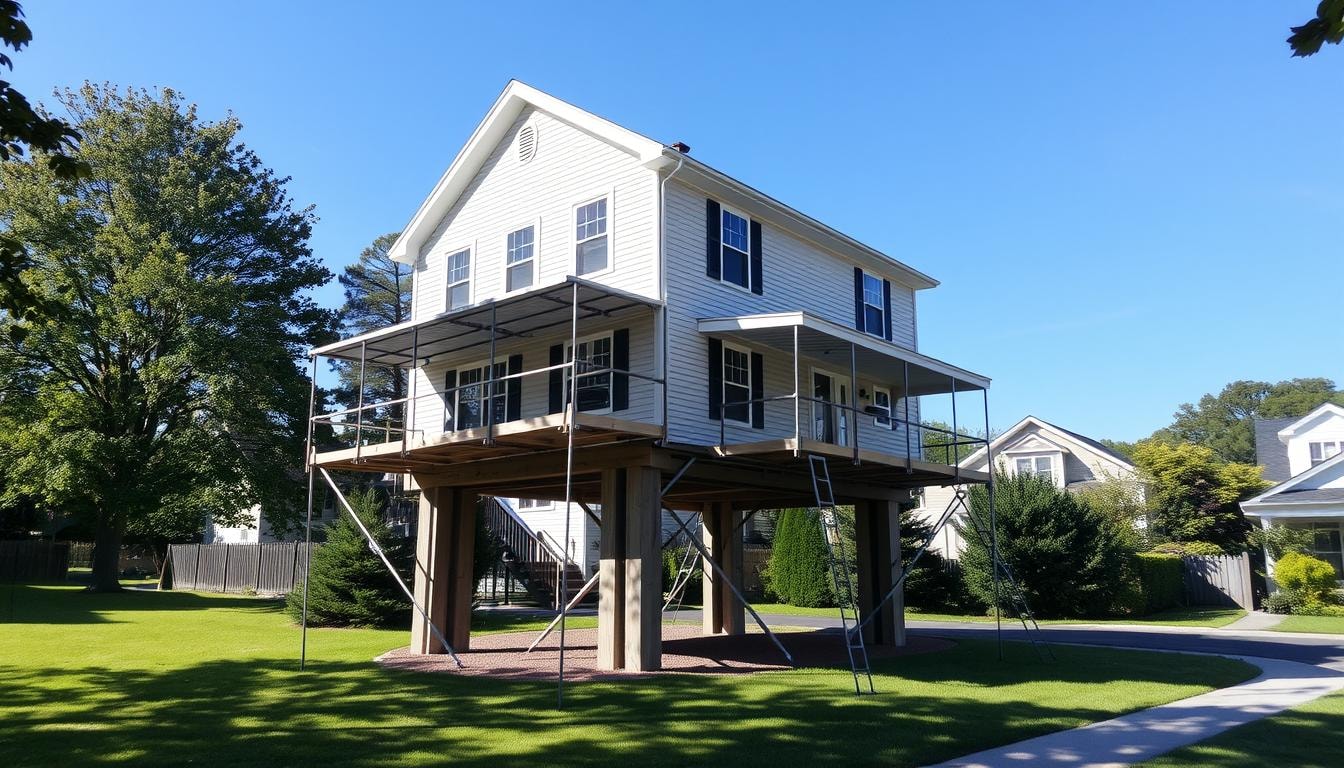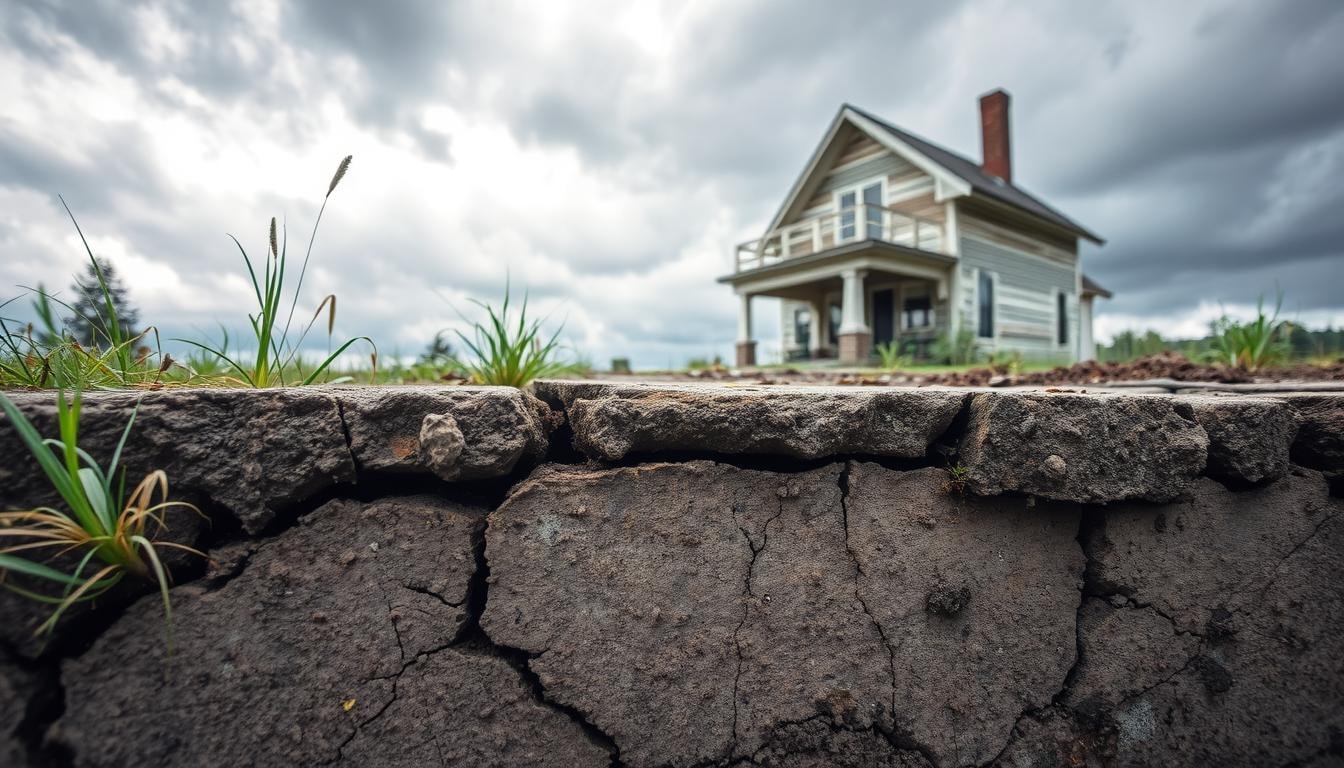House Lifters Near You
Can’t find what you are looking for?
How It Works
-
Answer a few questions about your home project.
-
Within seconds, get matched with top-rated local pros.
-
Compare quotes and choose the best pro for the job.
House Lifters In Your Area
Hiring House Lifters: A Guide to Raising Your Home
Meta Description: Discover the essential steps for hiring house lifters to elevate your home safely. Learn about costs, benefits, and choosing the right professionals for your project.

Is your home’s foundation showing signs of wear? House lifting might be the answer you need. This guide explores the world of house lifters and how to raise your home successfully.
House lifting is a complex task that requires expertise. It can add living space or prevent flooding. Understanding this service is key to your project’s success.
Lifting an entire house is a fascinating process. It involves specialized equipment and careful planning. This method can create a new basement or even relocate your home.
Key Takeaways
-
01
House lifting is a complex process that involves raising a home’s foundation to add more living space or prevent flooding.
-
02
The average cost of a house lifting project ranges from $15,000 to $80,000, depending on factors like home size and foundation condition.
-
03
Experienced house lifters use specialized equipment and techniques to ensure the safe and efficient elevation of a home.
-
04
Hiring a professional house lifting contractor is crucial to comply with local building codes and avoid potential issues.
-
05
Preventative measures like regular gutter cleaning and proper yard grading can help mitigate the need for house lifting in the future.
Understanding House Lifting Process
House lifting raises a home’s elevation to add space, fix issues, or meet flood regulations. It involves bracing the house, lifting it with steel beams and jacks, and placing it on a new foundation. This method ensures the home’s stability throughout the process.
Different Methods of House Lifting
The standard method uses steel beams under the floor framing at key points. A second set of beams is placed perpendicular to the first. Hydraulic jacks are positioned evenly under the home and used to raise the structure together.
This technique works well for homes built on partial basements, crawlspaces, or open foundations.
Step-by-Step Guide to the Lifting Process
- Brace the house to ensure structural integrity during the lifting process.
- Install steel beams under the floor framing at strategic locations.
- Position hydraulic jacks evenly under the home, connecting them to a unified hydraulic jacking machine.
- Raise the jacks simultaneously, lifting the house in a controlled and synchronized manner.
- Add cribbing, or temporary supports, underneath the house as it is lifted to provide a stable foundation.
- Repeat the lifting process in stages until the desired elevation is reached.
- Lower the house onto the new or reinforced foundation walls.
- Remove the steel beams, completing the house lifting process.
This careful approach uses steel beams, hydraulic jacks, and cribbing to raise houses safely. It protects the structure and its contents throughout the elevation process.
Reasons for Lifting Your Home
House lifting can serve many purposes, from adding space to protecting your home. It can create a new basement, relocate your house, or safeguard it from floods.
Adding Extra Living Space
Lifting your home can create a new basement or expand an existing one. This increases your home’s square footage and adds living areas like guest suites or offices.
The extra space can make your family more comfortable. It can also boost your property’s resale value.
Relocating the Home
Sometimes, homeowners need to move their houses for municipal projects or safety reasons. House lifting allows you to relocate while keeping your home’s structure intact.
This option helps protect your investment and maintain your preferred living environment.
Raising from Flood Zone
A key reason for lifting a home is to protect it from flooding. Raising the structure above flood levels reduces water damage risks.
This safeguards your home and irreplaceable items like photos and antiques. It also lowers your flood insurance premiums over time.
House lifting is complex and often expensive, but its benefits can outweigh the costs. It’s a valuable investment in your property’s long-term safety and sustainability.
Meeting Seismic Standards and Retrofitting
Home structural integrity is vital in areas prone to seismic activity. House lifters can reinforce beams and walls to meet current seismic standards. The goal is to reduce severe damage during earthquakes and protect inhabitants.
Seismic retrofitting includes cripple wall bracing, foundation bolting, and chimney reinforcement. For a medium-size home, a complete earthquake retrofit costs $4,000 to $7,000. Homes without cripple walls may need $3,000 to $6,000 for connection improvements.
Larger homes, multi-story buildings, and hillside houses often cost more to retrofit. A complete earthquake retrofit for these can exceed $10,000. Mobile homes can be retrofitted for under $5,000.
Chimney or fireplace retrofits may cost a few thousand dollars. The exact price depends on the work needed.
Seismic retrofitting enhances safety and increases property value. It’s especially important in earthquake-prone regions. Consulting experienced house lifters ensures proper implementation of retrofitting measures.
Earthquake retrofitting should be a top priority for homeowners. It protects their investment and ensures family safety. Taking these steps provides peace of mind against nature’s forces.
Foundation Repairs and Replacement

A home’s structural integrity starts with its foundation. Many factors can damage it, including poor drainage, natural disasters, and soil changes. Spotting signs like bowed walls and sagging floors is crucial.
Signs of Foundation Damage
- Bowed or cracked walls
- Uneven or sagging floors
- Doors and windows that no longer close properly
- Cracks in the interior or exterior walls
- Gaps between the wall and floor or ceiling
Benefits of Replacing Foundation
Lifting a home allows workers to fully inspect the foundation. They can then decide if repairs or replacement are needed. This process is key for the home’s structural stability.
The cost to lift a house and replace the foundation varies widely. It can range from $20,000 to $100,000, based on project size and complexity.
This investment can boost your home’s resale value by 15% to 25%. It may also lower insurance premiums by 30% to 60%.
Hiring House Lifters: Factors to Consider
Homeowners must carefully evaluate key factors when hiring house lifting contractors. The contractor’s experience and expertise are crucial. Specialized equipment and skills are needed to lift homes safely.
Homeowners should check potential contractors’ track records and portfolios. This helps confirm their abilities to handle the job successfully.
Experience and Expertise
Larger homes need more specialized equipment and expertise. Experienced contractors have the knowledge to handle complex jobs. They can reduce risks and ensure a smooth outcome.
Licensing and Insurance
Confirming licensing and insurance credentials is vital. Reputable companies should be properly licensed. They should also have comprehensive liability insurance to protect homeowners.
Cost Estimates and Budgeting
House lifting costs can vary greatly. Factors like size of the home, foundation repairs, and required permits affect the price.
Homeowners should get detailed estimates from multiple contractors. They should budget for the entire project. This includes utilities disconnection and reconnection, and any necessary basement or foundation work.
Careful consideration of these factors helps homeowners find qualified contractors. This ensures a successful and cost-effective home elevation project.
Preparing for the House Lifting Project

Homeowners must get house lifting permits before starting the project. These permits cost $1,000 to $5,000, depending on location and project details. They ensure compliance with local regulatory requirements and provide approvals for project preparation.
Home utilities must be safely disconnected by licensed professionals. This includes power, plumbing, sewer, water, gas, and footing drains. The utility disconnection allows for efficient work without disruptions.
After the project, utilities will need reconnection. This ensures the home is fully functional and ready for occupancy.
Obtaining Necessary Permits
Homeowners must get permits before starting the house lifting project. This process may involve several steps.
They need to submit detailed plans to local authorities. They must show they follow zoning and building codes. Approvals from regulatory agencies are necessary.
Homeowners also need to pay the required permit fees.
Disconnecting Utilities
Licensed professionals must safely disconnect all utilities before the house lift. This includes shutting off power, gas, and water services.
They also need to cap sewer and plumbing lines. Footing drains must be drained and disconnected.
This ensures a safe transition during the project.
These steps ensure a smooth house lifting project. They minimize disruptions and follow all regulatory requirements.
FindPros: Experts to Handle Your House Lifting Needs
Are you ready to take the next step in your house lifting project? Look no further than FindPros, the leading platform that connects homeowners with the best local professionals. With FindPros, you can get competitive pricing from multiple experts who are eager to bid on your job. Simply answer a few questions about your home, and within seconds, you’ll be matched with top-rated local pros who specialize in house lifting. Compare quotes, read reviews, and choose the perfect fit for your project. Take the guesswork out of hiring and let FindPros handle the rest. Get started today and let our network of skilled professionals handle your house lifting needs.
Conclusion
Hiring the right house lifters is crucial for a successful home elevation project. Understanding the house lifting process and factors to consider helps homeowners make informed decisions. House lifting can add living space, protect from disasters, or fix structural issues.
For foundation repair or structural relocation, choose an award winning company with proven excellence. These expert house movers have the knowledge, safety protocols, and local insights for complex projects.
Trust that your building and structures will be safe during the lifting and raising process. Homeowners, commercial clients, and property owners facing flooding risks can benefit from skilled house lifters.
These professionals ensure quality, efficiency, and safety for your buildings. They create a lasting, structurally sound future for generations to come. Contact expert house movers today for a free estimate on your house lifting project.
Frequently Asked Questions (House Lifters)
MOST POPULAR CITIES
Browse by State- Alameda
- Costa Mesa
- Laguna Beach
- Orange
- Alhambra
- Culver City
- Lancaster
- Oroville
- Anaheim
- Daly City
- Livermore
- Oxnard
- Antioch
- Davis
- Lodi
- Pacific Grove
- Arcadia
- Downey
- Lompoc
- Palm Springs
- Bakersfield
- El Centro
- Long Beach
- Palmdale
- Barstow
- El Cerrito
- Los Angeles
- Palo Alto
- Belmont
- El Monte
- Malibu
- Pasadena
- Berkeley
- Escondido
- Martinez
- Petaluma
- Beverly Hills
- Eureka
- Marysville
- Pomona
- Brea
- Fairfield
- Menlo Park
- Port Hueneme
- Buena Park
- Fontana
- Merced
- Rancho Cucamonga
- Burbank
- Fremont
- Modesto
- Red Bluff
- Calexico
- Fresno
- Monterey
- Redding
- Calistoga
- Fullerton
- Mountain View
- Redlands
- Carlsbad
- Garden Grove
- Napa
- Redondo Beach
- Carmel
- Glendale
- Needles
- Redwood City
- Chico
- Hayward
- Newport Beach
- Richmond
- Chula Vista
- Hollywood
- Norwalk
- Riverside
- Claremont
- Huntington Beach
- Novato
- Roseville
- Compton
- Indio
- Oakland
- Sacramento
- Concord
- Inglewood
- Oceanside
- Salinas
- Corona
- Irvine
- Ojai
- San Bernardino
- Coronado
- La Habra
- Ontario
- San Clemente